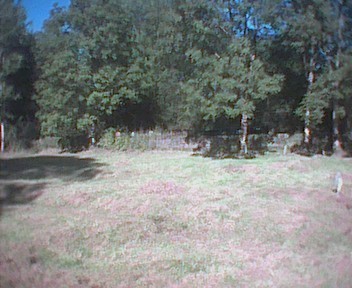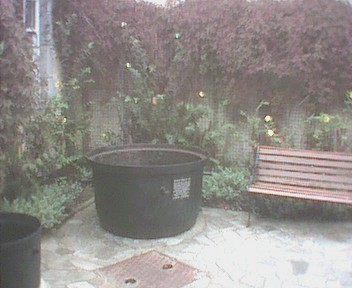Famine Graveyard
Today I saw the most poignant sight of so many in Ireland - all the more
so on a perfect September day - one of those things that makes a terrible time
in history so real you can touch the emotions and feel the pain, and the shame
in the muteness.
Simply, a Famine Graveyard, from that time in Irish history ( mid-19th century)
when the potato blight robbed the already poor and oppressed Irish people of
their staple food.
And when the rich governors chose to let them starve while they lived well -
because after all, they were peasants.......and thus of no importance
For all the while food was being exported from Ireland, and imported..
So they died slowly, men women , children, babies, of starvation. And were
buried in mass graves, with no markers and often no priest, which to those of so
deep faith was an appalling thing.
The Irish cherish their dead; in every abbey ruin the graves are crowded in, in
the old holy places, and to our eyes, they are, until you get used to them,
almost garish with paper flowers and photos. And they plant flowers, and tend
them so lovingly.
So the contrast with this bare, silent place is even greater..
It is a peaceful place, this Famine Graveyard. A deep silence, a listening
awareness. No monuments; just a simple plaque erected by a group in New York -
for of course the famine led to mass emigration.
Coffin ships, they called them. The desperation of a dying race.
Tall trees, green still now against the blue sky; the living sunlight caresses
and flickers through the bright tracery.....rough grass, newly mown in care. And
a few small, worn crosses.
And mounds and ridges that are the only mark of the countless anonymous people
roughly buried there.
People who lived and loved, laughed and sang, prayed - and suffered needlessly,
speaking in their silence.
I wandered there, near tears, and all I could pray was "Father, forgive, Father
forgive, Father forgive."
And a century and a half later?
"Father, forgive".
I went from there to the Poor Clare convent, and prayed long in the Adoration
Chapel, then joined in Noon Prayer and the Rosary, ancient, timeless prayers
that echo through long centuries back to those lost people.
A post-script.
My travels much later took me to Rossnowlaugh, the Franciscan Friary Peace and
Reconciliation Centre in Co Donegal.
The huge iron pot seen here bears silent testimony to how hard the local
authorities strove to help stem the dark tide of hunger against the obdurate
insouciance of the rich rulers.


